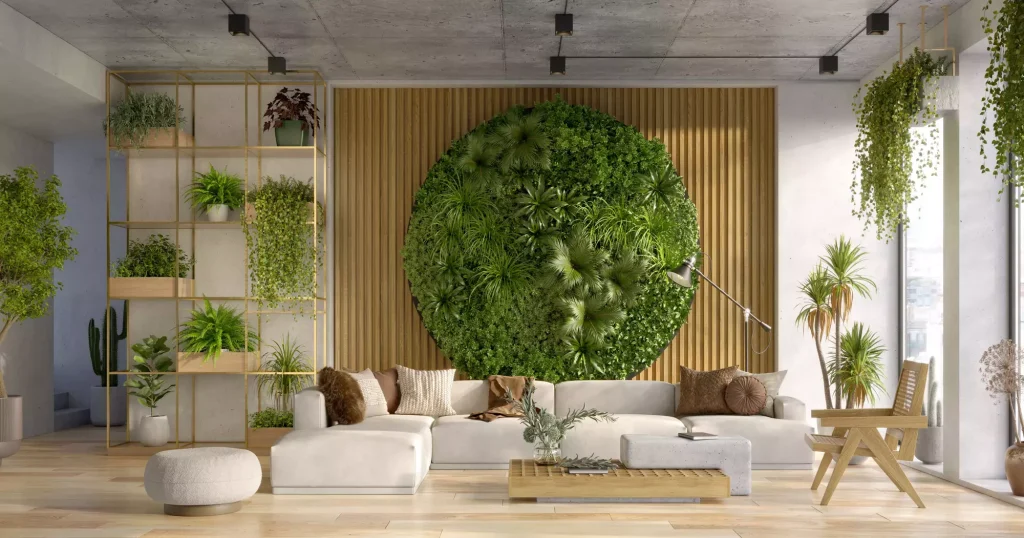
Biophilic Design Trends for Urban Homes Without Outdoor Space
Let’s face it—city living often means sacrificing greenery. Tiny apartments, no balconies, and views of concrete instead of trees. But here’s the deal: biophilic design isn’t just for sprawling suburban homes. Even if your “outdoor space” is a windowsill, you can still bring nature indoors. And honestly? The trends right now are brilliant for small spaces.
Why Biophilic Design Matters in Tiny Urban Homes
Biophilia—our innate love for nature—doesn’t vanish just because we live in a high-rise. In fact, studies show that even small doses of nature indoors reduce stress, boost creativity, and improve air quality. For urban dwellers, it’s not a luxury; it’s a mental health necessity.
1. Vertical Gardens: Go Up, Not Out
No floor space? No problem. Vertical gardens turn walls into living art. Here’s how to make it work:
- Modular planters: Systems like Woolly Pocket or DIY felt pockets let you mix herbs, ferns, and trailing plants.
- Moss walls: Low-maintenance and lush—preserved moss doesn’t need light or water.
- Climbing plants: Pothos or philodendrons on trellises add texture without hogging square footage.
Pro tip: Stick to lightweight plants if your walls can’t handle heavy planters. Air plants (Tillandsia) are perfect—no soil, just misting.
2. Smart Plant Choices for Low-Light Apartments
Not all plants need a sun-drenched patio. These thrive in dim corners:
| Plant | Light Needs | Care Level |
| Snake Plant | Low to indirect | Nearly unkillable |
| ZZ Plant | Low | Water monthly |
| Cast Iron Plant | Shade-tolerant | Slow grower |
And hey, if you’ve killed every plant you’ve owned? Try a faux fiddle-leaf fig. Today’s artificial plants look eerily real—just dust them occasionally.
3. Nature-Inspired Materials and Textures
Biophilic design isn’t just about plants. It’s about echoing nature through materials. Think:
- Reclaimed wood: A floating shelf or live-edge coffee table adds warmth.
- Stone accents: Marble coasters, travertine side tables—small touches with big impact.
- Jute or rattan: A woven rug or pendant light brings organic texture.
Even a single terracotta pot on a desk can ground a room in earthy vibes.
4. Water Features (Yes, Indoors)
The sound of running water is instant zen. For apartments:
- Tabletop fountains: Compact, plug-in versions fit on consoles.
- Wall-mounted water panels: Sleek and space-saving—some even double as art.
- Fish tanks: A nano aquarium (5 gallons or less) with aquatic plants is mesmerizing.
Just avoid anything too splashy—your downstairs neighbors will thank you.
5. Dynamic Lighting That Mimics Nature
Fluorescent overhead lights? Hard pass. Instead:
- Circadian rhythm bulbs: Adjust color temperature from dawn-like warm to midday bright.
- Dappled light effects: Use sheer curtains or perforated lampshades to mimic sunlight through leaves.
- Candlelight: Flameless LED candles flicker like the real thing—no fire hazard.
Bonus: A sunrise alarm clock gently wakes you with light that mimics… well, a sunrise.
6. Biomorphic Patterns and Art
No green thumb? Borrow nature’s shapes. Try:
- Leaf-print wallpaper: A single accent wall with a subtle botanical print.
- Fractal art: Studies show fractal patterns (think fern spirals) reduce stress by 60%.
- Organic ceramics: Vases or bowls with uneven, hand-formed edges.
Even a wood-grain vinyl wrap on a bland fridge can trick your brain into feeling more connected to nature.
7. Micro-Habitats: Terrariums and Beyond
Tiny ecosystems are having a moment. Consider:
- Closed terrariums: Self-sustaining jars of moss and ferns—water them maybe twice a year.
- Air plant displays: Hang them in geometric glass orbs.
- Bonsai: Miniature trees that thrive indoors (Ficus or Jade varieties are beginner-friendly).
They’re like little worlds you can tend to without needing a yard.
Final Thought: Biophilia Is a Mindset
You don’t need a forest—just the essence of one. A pebble-lined tray, the scent of eucalyptus in a diffuser, the sound of rain on a white noise app. Urban life might keep us from nature, but these trends prove we can weave it back in—one small, intentional detail at a time.
